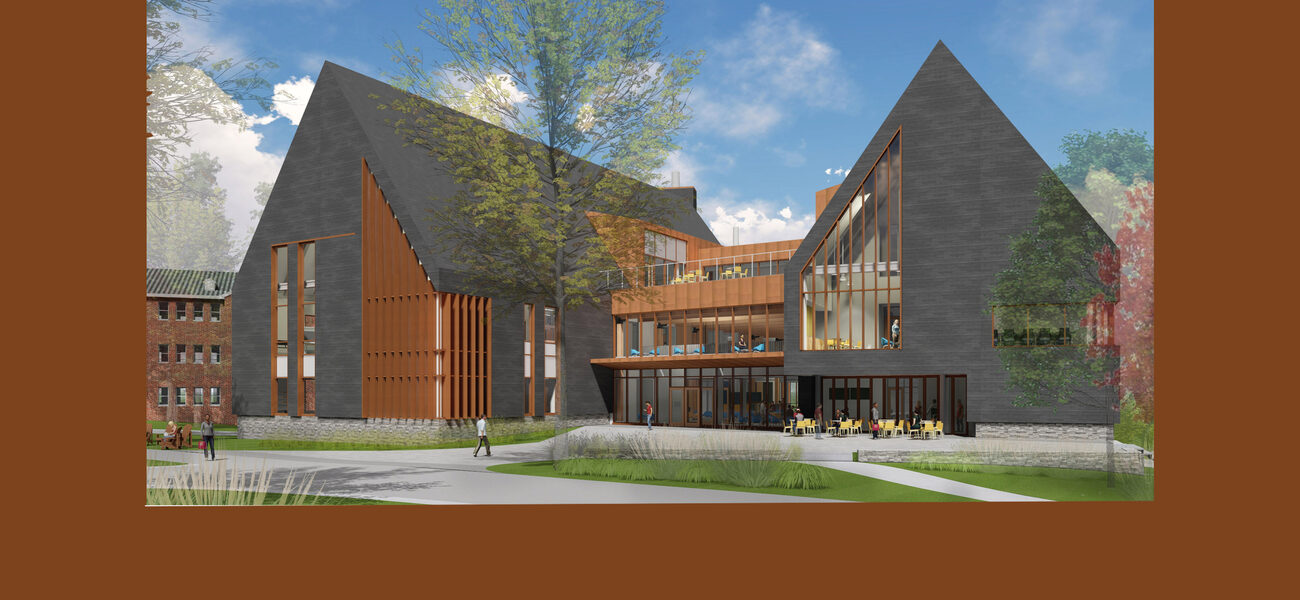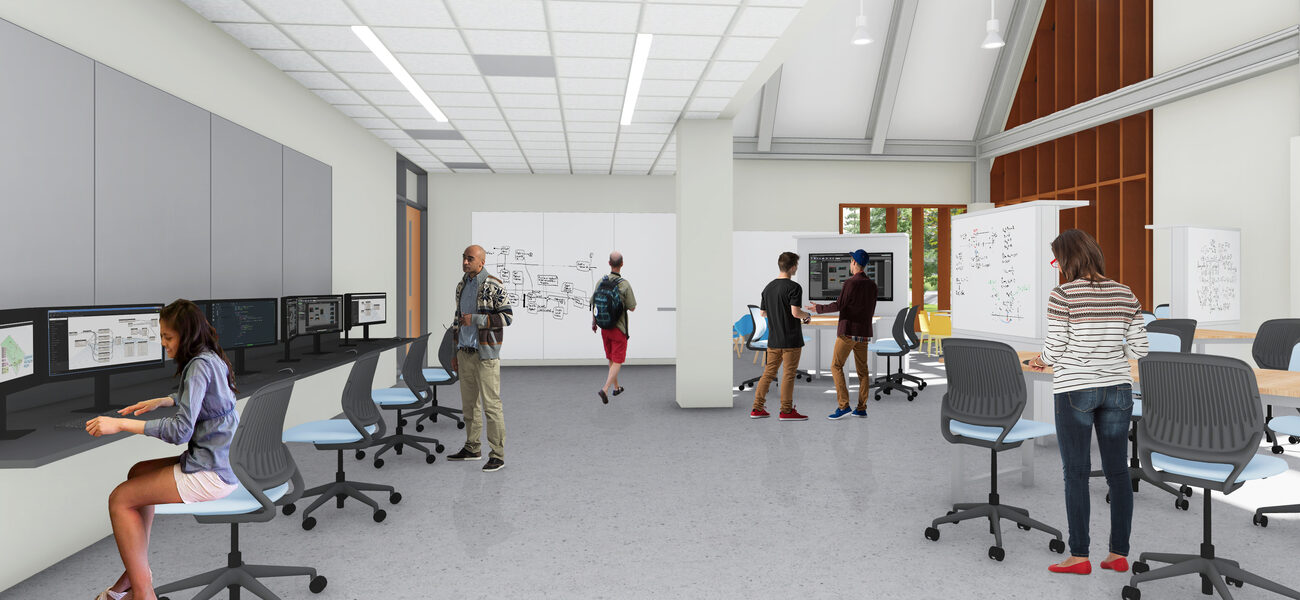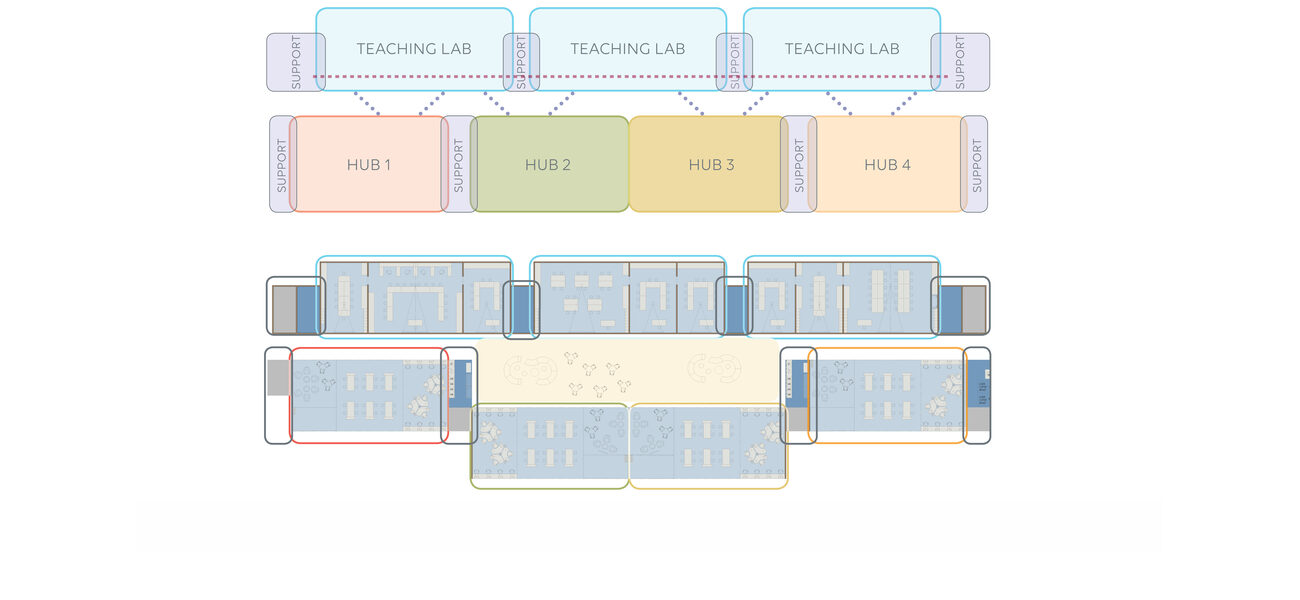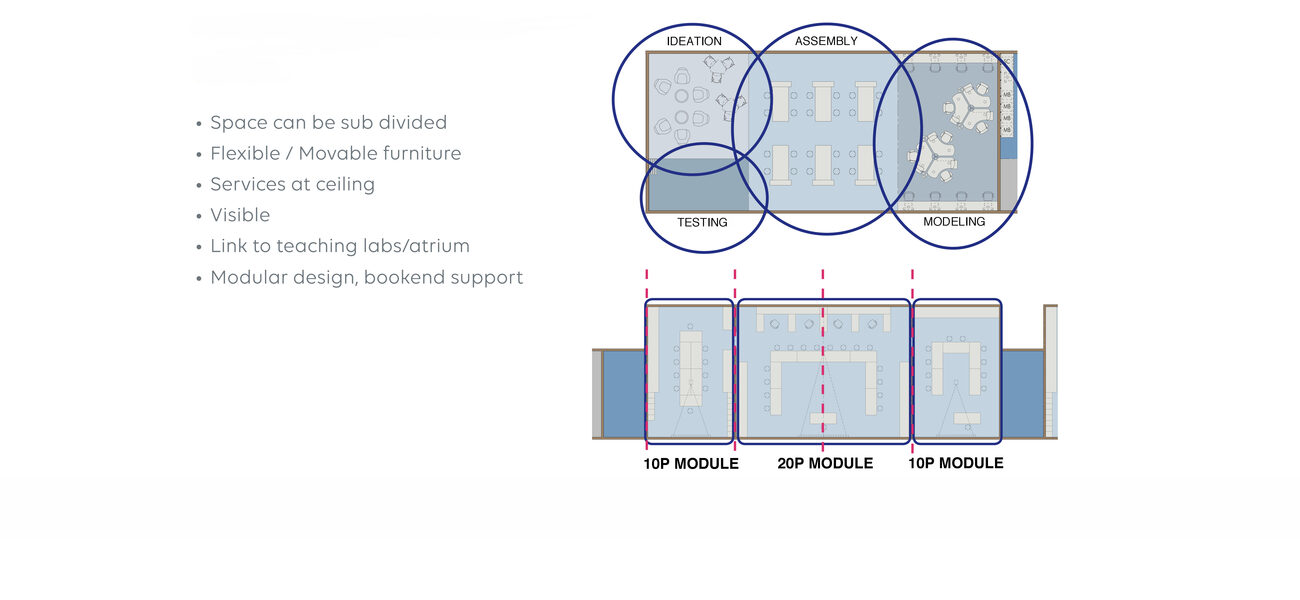As Southern New Hampshire University (SNHU) experiences exponential growth of its online programs, it continues to invest in its physical campus, most notably in a new college of engineering. While the university is not looking to increase its on-campus enrollment, it is expanding its offerings on its Manchester, N.H., campus, with new facilities, an academic quad, two new residence halls, and a large greenspace. The centerpiece of this investment is the $45 million, 68,000-sf College of Engineering, Technology and Aeronautics (CETA), the first new academic building added to the Manchester campus in over a decade. The CETA building, which opened in January, is SNHU’s first new facility devoted to engineering technologies, and will help expand access to STEM education in the New England region.
Disrupting the Norm
More than 3,000 learners attend SNHU’s Manchester campus, which offers a total of about 200 programs—both online and on campus—ranging from certificate to doctoral programs in STEM, business, education, liberal arts, and social sciences.
“At SNHU, we take pride in being known for disrupting the way college is normally done, and this spirit is helping to shape both the structure of the new CETA building and the teaching methods our faculty employ,” says Angela Foss, associate dean of operations & innovation for SNHU’s CETA program. “We strive to keep our focus on the school’s mission of expanding access to education by creating high quality, affordable and innovative programs that meet the unique needs of each and every learner, despite their circumstances.”
Foss points to several statistics that underscore the need, across the country and across disciplines, for higher education to expand access to nontraditional and underprivileged students:
- 31 percent of students come from families at or below the federal poverty level.
- Only 11 percent of young adults from low-income families earn a bachelor’s degree by the age of 24, compared with 58 percent of high-income families.
- 64 percent of college students work while attending school, and 40 percent of these students work full-time.
- More than 17 percent of students participating in a national survey reported being homeless the previous year.
Foss adds that in STEM disciplines, disparities continue to exist between the low graduation rates of women earning engineering degrees, compared to their male counterparts, and the numbers are also skewed by ethnicity: A report by the American Society of Engineering Education stated that in 2017, 62.3 percent of engineering bachelor’s degrees were earned by white students, 14.6 percent by Asian American students, 11.1 percent by Hispanic students, and only 4.1 percent by African American students.
“We are always looking for more ways to increase accessibility for all of our learners,” says Foss. For example, SNHU offers extended lab hours to better accommodate learners who work full time, and the facility team works in conjunction with campus security to give full consideration to safety.
Foss also points to several unique curriculum features at SNHU that aim to broaden access to STEM courses.
“The freshman engineering design course is open to all SNHU learners, not just engineering majors, to encourage everyone to consider the field,” says Foss.
SNHU is also exploring how to take micro-credential options related to specific skills that they currently offer and make them “stackable,” meaning they can help qualify learners for a full degree. This will allow learners to begin by earning shorter certifications or online badges in specific technology skills that can eventually be stacked onto longer engineering degree programs.
“The site selected for the new CETA facility is itself a tool to promote accessibility,” says Chris Martin, AIA, LEED AP, principal for Wilson HGA, the firm responsible for design of the new building. “Very often, engineering programs are tucked off campus or relegated to their own distinct area, but at SNHU, the CETA facility will be a prominent focus of the main campus, putting engineering technology on display.”
“Throughout the entire design process, we have aimed to make the building extremely welcoming, inviting, and accessible, beyond just the mandatory ADA requirements,” says Cristianne Peschard, AIA, LEED AP, architect for Wilson HGA. “We continued SNHU’s tradition of including a fireplace in every new building, so that students feel at home, and all of the furniture selected for common areas is intended to encourage students to hang out longer than they may have intended.”
Starting from Scratch
In 2016, SNHU acquired the engineering programs from nearby Daniel Webster College (DWC), a smaller school that was closing its doors, which allowed current DWC students to finish their degrees, and provided SNHU with an almost instant framework for launching an engineering and technology department. DWC faculty taught the remaining DWC students before moving all classes to the SNHU campus in 2018.
The only building that SNHU acquired from DWC is located at the Nashua airport and now houses SNHU’s flight programs, including pilot training and aviation management. In order to accommodate the new engineering and technology curriculum, an engineering annex was quickly built on the main campus to house classrooms and labs. The Annex currently houses classrooms, offices, and equipment-rich labs, including a construction management studio and air traffic management simulation labs.
The three-story CETA facility will feature four CDIO (Conceive, Design, Implement, Operate) hubs totaling more than 7,000 sf, where students can work on projects from conception through operation. Another 6,300 sf is devoted to teaching labs, with the remaining space allocated to administrative and teaching support space, flexible classrooms, collaboration spaces, a computer lab, and suites for robotics, materials science, and 2D/3D printing.
SNHU is in the process of becoming a member of the CDIO initiative, which began in 2000 and currently includes more than 120 engineering schools. In August 2018, SNHU received accreditation from the Accreditation Board for Engineering and Technology (ABET) for its Mechanical Engineering and Aeronautical Engineering programs. SNHU is an FAA-approved Air Traffic Collegiate Training Initiative (CTI) Institute. SNHU also offers technology classes in computer science and engineering, information technologies, and construction management.
“The CDIO Hubs are intended to promote flexibility and adaptability as needs change based on teaching goals and project requirements,” says Martin. “All of the utilities are located in the ceiling so that they can be easily changed in the future.”
The hubs are made even more flexible by using only furniture and equipment that is moveable, and the space can be easily sub-divided in the future.
“We incorporated a modular design on each level, so that there are support spaces readily available to each of the CDIO hubs, and if necessary, all of the space can be interchangeable in the future,” says Peschard.
That uncertainty about the future makes the project even more exciting, says Foss.
“Because we are building this facility from scratch and creating a brand-new curriculum, we don’t have a lot of legacy, and therefore there is not a lot of pushback to the idea of trying new methods,” she says. “This approach fits very well with SNHU’s philosophy that it’s okay—and often advisable—to disrupt the norm, as long as we are in pursuit of the best for our students.”
By Amy Cammell
| Organization | Project Role |
|---|---|
|
HGA
|
Architect
|



